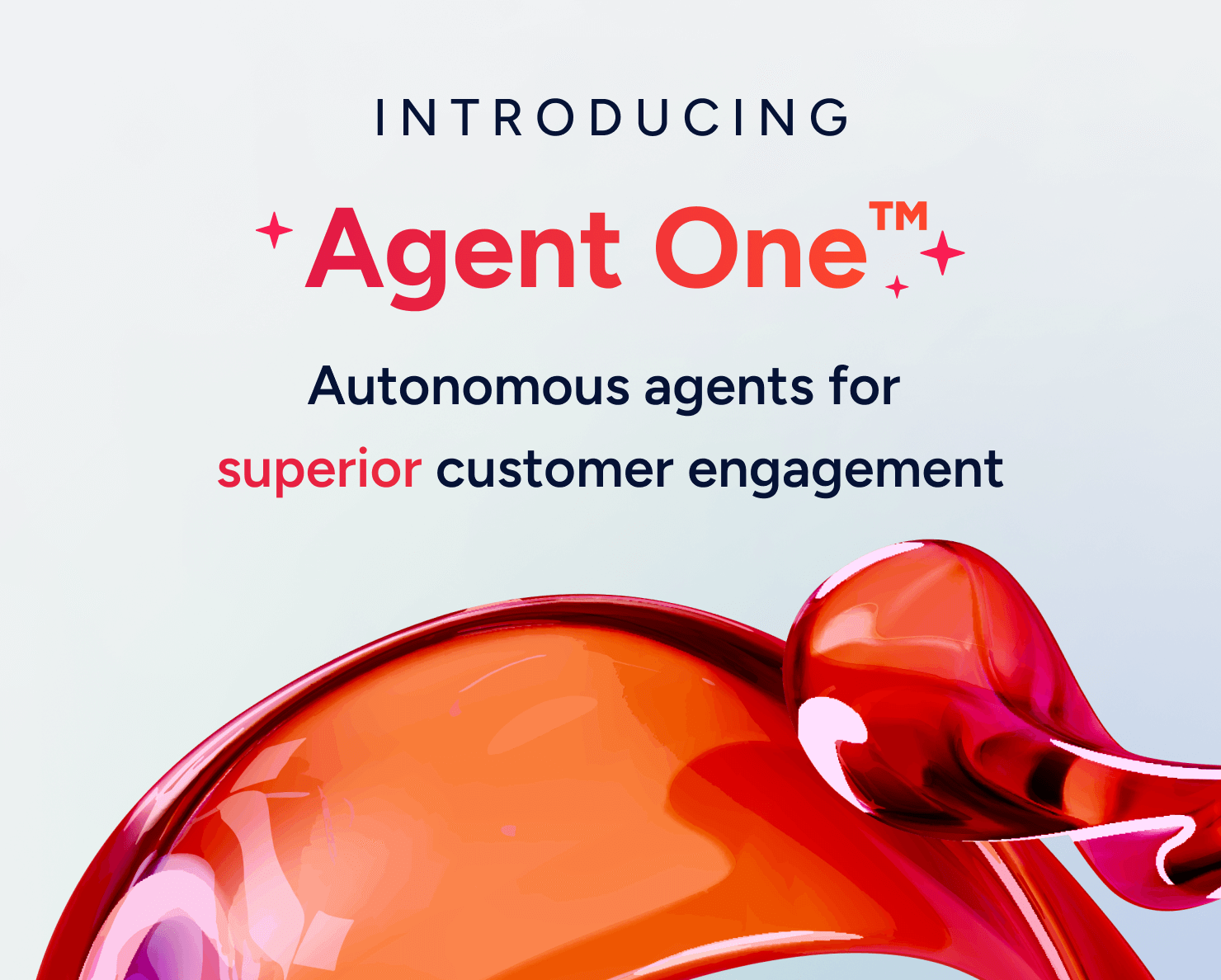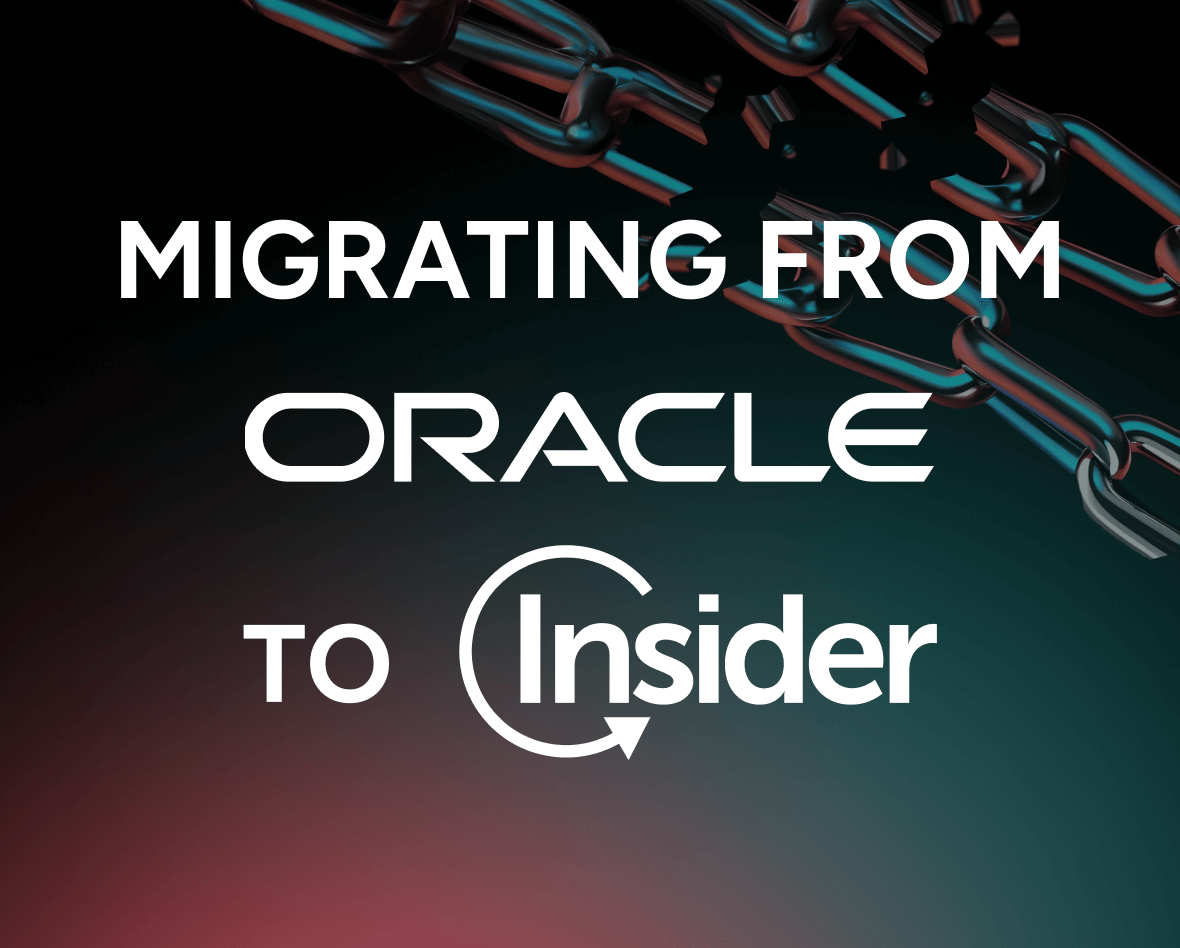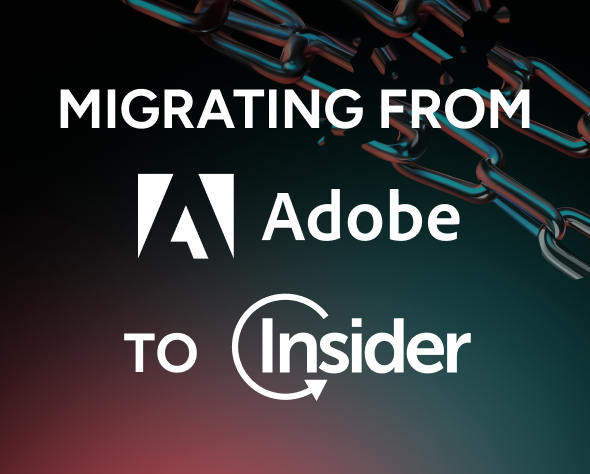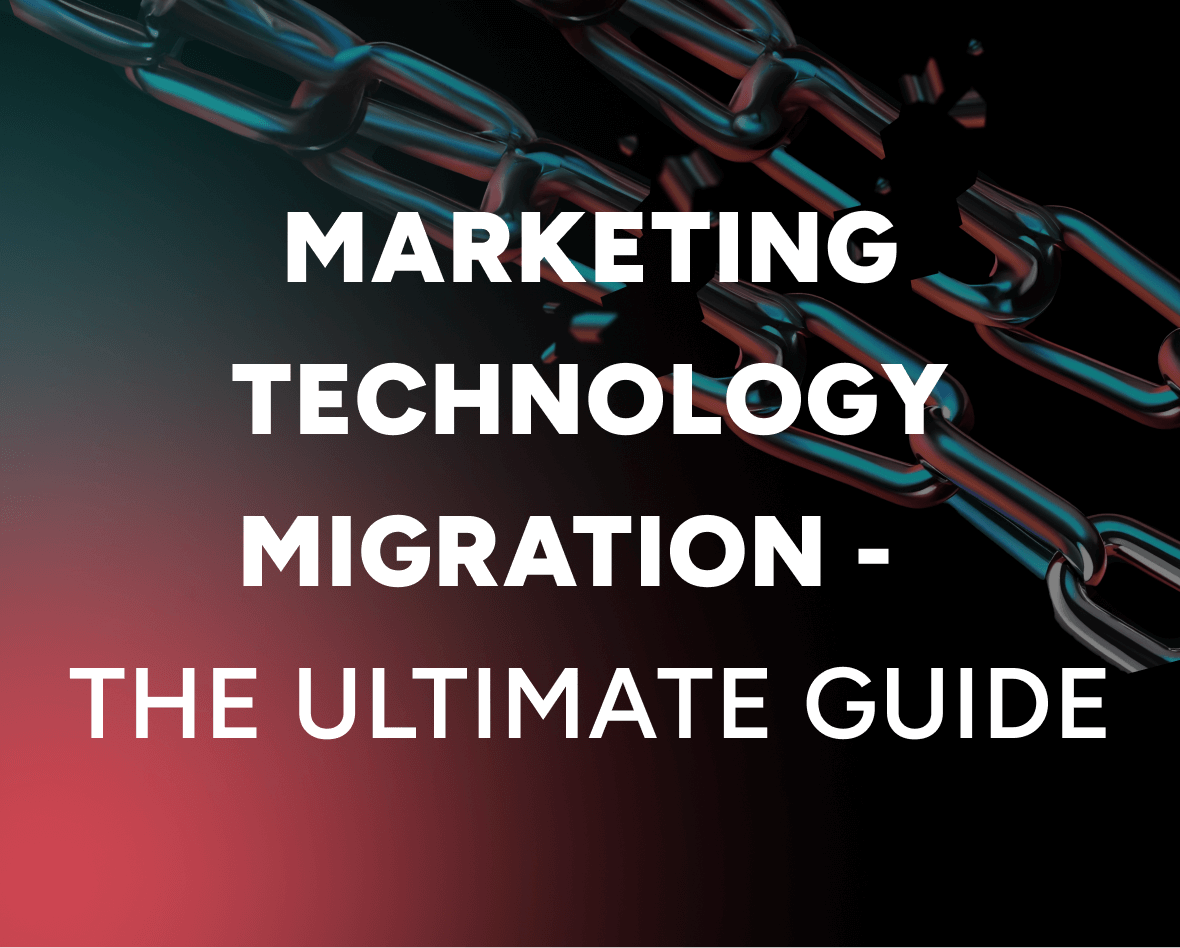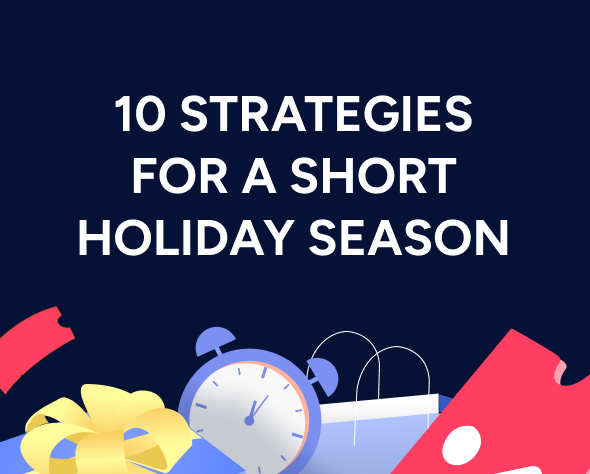What is behavioral targeting? Types, benefits, and examples
Tracking behavioral data and using it to accurately target users with relevant ads is an essential strategy for any online business. However, the development of new marketing technologies has drastically expanded the potential of behavioral targeting across channels and use cases.
Updated on 10 Oct 2025
Today, marketers can leverage user interaction data to deliver highly personalized messages across all channels — including their websites, mobile apps, email, messaging channels, and more. AI and machine learning algorithms can also use this data to accurately predict future behaviors, which opens a whole set of new possibilities for marketing teams.
In this guide, you’ll learn how to take advantage of proven behavioral targeting techniques to engage customers, drive revenue, and improve retention. But first, we’ll start by discussing what behavioral targeting is and why it’s so crucial.
What is behavioral targeting? (Definition and benefits)
Behavioral targeting is a combination of techniques that use people’s actions — like website interactions, purchase and browsing histories, and more — to deliver highly relevant marketing messages.
This is in stark contrast to standard contextual targeting which relies on the content on a given page to deliver ads, instead of using information about the user or their actions.
In the strict sense, behavioral targeting’s goal is to deliver more relevant ads (which is why it’s sometimes referred to as behavioral advertising). Advertisers and publishers use it to build personalized ad campaigns across platforms like Facebook, Google, Amazon, and TikTok.
However, the principles of behavioral targeting can also be used to create a personalized customer experience on all channels and touchpoints. For example, you can use data about customers’ interactions with your brand to:
- Show them relevant product recommendations across your website or mobile app.
- Trigger each message in your campaigns at the time and on the channel (e.g., email, push notifications, SMS, or WhatsApp) they’re most likely to engage with.
- Tailor all elements of your website — including banners, pop-ups, site search results, and more — to each visitor’s behaviors and preferences.
- And much more.
This type of behavioral marketing ensures your campaigns are based on a solid understanding of how users interact with your brand, resulting in higher engagement and conversion rates, more revenue, and a better customer experience.
The different types of behavioral targeting
Behavioral targeting is a broad category that includes various techniques and sources of targeting data (e.g., website interactions, previous purchases, and so on). Below, we’ll look at four proven behavioral targeting methods, organized by the data that’s required to put them into practice.
Website and mobile app interactions
Tracking which pages users visit and where they click on your site is one of the easiest and most powerful ways to target them effectively. It’s also essential for optimizing the on-site experience and improving conversion rates, so you can maximize the budget you spend on getting people to the site or app.
That’s why eCommerce stores collect data about the categories and products each website visitor browses. This data can be used to create targeted digital advertising campaigns across search engines and social media, as well as to deliver relevant website content, messaging, and product recommendations.
For a real-life example, check out our case study with Sapphire. This fashion brand wanted to recreate its great in-store experience across its website by customizing the experience to each user’s preferences.
To do that, they started using Insider to collect website data and target visitors with:
- Personalized banners, based on people’s locations and the time of year. These banners promoted new products and highlighted events and holidays, like Valentine’s Day, leading to a 244% increase in conversions, a 93% boost in average order value (AOV), and a 53x return on investment (ROI).
- Tailored product recommendations, based on what people had shown interest in. They did this by adding Insider’s AI-powered Smart Recommender widget on every product page. This tool showcased relevant items that aligned with users’ interests, leading to a 12x ROI.
Browsing and purchase history
Targeting customers based on their purchase history is another powerful way to deliver highly relevant offers.
As we showed in the previous section, a good product recommendation engine can use browsing and purchase history data (alongside other useful insights) to determine the best possible products to show to each specific customer.
This is especially useful for eCommerce websites with large product catalogs where product discovery becomes a big challenge.
It’s also a proven way to optimize metrics like click-through rates (CTR), acquisition costs, and return on ad spend (ROAS) by targeting customers with online ads based on the products they’re interested in.
A popular strategy here is to show retargeting ads across search engines and social media with products that users browsed or added to their carts.
Email and messaging channels campaign engagement
This type of targeting is based on how users interact with your campaigns — e.g., which messages they click on, which channels they engage with the most, which offers to catch their attention, and so on.
These insights enable you to optimize your campaigns during the entire customer lifecycle.
For example, the fashion brand Remix used behavioral targeting in combination with email automation to encourage first purchases by new leads.
They did that by creating an automated email campaign with steps based on user behaviors.
If a user signed up for the newsletter but didn’t make a purchase within a week, an email was triggered that prompted them to save their search filters. After a few days, a second email was sent that showed users how to mark a brand as a favorite.
Finally, a third email followed a few days later showing users how to combine orders and save money on shipping.
This email targeting technique resulted in a 104% increase in first purchases compared to the previous quarter.
Again, similar techniques can easily be applied to other channels like push notifications, SMS, and WhatsApp. The key is to have reliable behavioral data and use it to target users, based on their interactions with your previous messages (and your other channels).
Predictive behavioral targeting
Traditional marketing tools can target people based on behaviors they’ve already exhibited, like subscribing to a newsletter, browsing a category, or adding an item to their carts.
However, recent advancements in machine learning and AI have enabled brands to also target customers based on what they’re likely to do in the future. This is possible thanks to a collection of techniques falling under the umbrella of predictive marketing.
For example, you can use a predictive engine to determine a customer’s likelihood to purchase a product or engage on a specific channel. This helps you spend your budget more efficiently by focusing on the customers and channels that have the highest likelihood of generating revenue for your business.
For a real-life example, check out our case study with U.S. Polo Assn. They used Insider’s predictive targeting to uncover customers with the highest purchase intent and show them personalized Google ads. This resulted in a 311% increase in conversion rates, a 135% boost in ROAS, and a 58% decrease in customer acquisition costs.
How to implement behavioral targeting (with examples)
As you can see, behavioral targeting can be used for a variety of use cases and channels. Despite this versatility, there are three key steps that pretty much all teams must go through to succeed in this endeavor:
- Data collection and unification.
- Behavioral segmentation and analytics.
- Data activation across channels.
Below, we’ll explore all three steps in detail using Insider to show how you can put each one into practice. We’ll also cover three real-life use cases of successful behavioral targeting and the impact on conversions, AOV, and ROI.
Data collection and unification
Accurate behavioral targeting is only possible through reliable user data.
You need information on how people interact with your brand across all channels — including your website, emails, messaging channel communications, online ads, and more — to understand their journeys and target them effectively.
Today, much of the data collection process is automated. For example, analytics platforms like Google Analytics automatically collect tons of useful website interaction data, while popular channel-specific tools gather insights into campaign performance across different touchpoints.
However, most marketing teams face a big challenge here as their behavioral data is siloed off these different solutions, including analytics tools, email and SMS platforms, content management systems (CMSs), customer relationship management systems (CRMs), and so on.
As a result, many teams lack a true understanding of their customers’ omnichannel journeys. They also can’t leverage all the available data without investing tons of time and engineering hours into complex integrations.
That’s why a customer data platform (CDP) can drastically improve your behavioral targeting efforts. CDPs are solutions built specifically to:
- Unify customer data from different sources into a single convenient database, which overcomes data silos.
- Resolve omnichannel identities and give you detailed, 360-degree customer views. These user profiles contain everything you need to target customers effectively, including their demographics, favorite channels, purchase and browsing histories, and much more.
For example, the screenshot below shows a 360-degree customer profile created with Insider’s enterprise CDP. As you can see, this view offers all sorts of useful insights for your behavioral targeting efforts, including last purchased, browsed, and abandoned products, projected spending, likelihood to purchase, and discount affinity.
Put simply, a good CDP gives you a solid foundation to target customers effectively, based on all the available real-time data you have about them. This data can be provided by customers directly, collected on your channels (i.e., zero- and first-party data), and even collected by other domains (although the importance of third-party cookies is diminishing).
Behavioral segmentation and analytics
Once your data is unified, the next step is to organize it in a way that makes sense for your behavioral targeting process. This is where behavioral segmentation comes in.
Behavioral segmentation consists of dividing leads and customers into segments based on their behavioral characteristics, like their visiting behaviors, purchasing habits, channel preferences and engagement, and much more.
It’s usually combined with other types of segmentation — like demographic and geographic segmentation — to create detailed audience segments. For example, with Insider, you can segment using 120+ behaviors, traits, and attributes across three different audience types:
- Standard, which includes characteristics like locations, devices, and demographics.
- Predefined, which are automatically created groups of users who abandoned their carts, interacted with your brand on a specific channel, installed your mobile app, and more.
- Predictive, which are created by our AI-powered algorithms to detect customers’ likelihood to purchase or engage on a channel, projected spending, and more. If you’re interested, we explore this topic in detail in our article on predictive marketing.
These versatile segmentation options let you organize your audiences based on the behaviors and traits that drive revenue and retention for your business.
For example, you can create segments of customers who:
- Have shown interest in a specific product.
- Have engaged with your messages on a specific channel.
- Have a high likelihood of purchasing and a high potential customer lifetime value (CLTV).
Targeting audience segments with relevant content based on their needs and interests has a much higher chance of driving conversions compared to using only contextual or demographic targeting. You can also set up automations to trigger messages at the times each customer in this segment is most likely to respond.
Additionally, segmentation lets you analyze your most important customers in detail to understand their behaviors and find ways to improve the user experience. For example, here are a few useful behavioral analytics features you can use to uncover valuable insights:
- Retention cohorts: You can build cohorts for any user behavior — like web page views or product purchases — to uncover the long-term value of each segment and find out how to keep customers engaged over the long term.
- Purchase behavior analytics: These capabilities let you analyze the purchase decisions of important customer segments, including their AOV, purchases per customer, the categories and products that drive the most revenue, and so on.
- Channel reachability and message frequency analytics: These features help you understand where and how specific customer segments prefer to be contacted. You can track what percentage of your audiences is reachable on each channel and see the optimal message frequency for those audiences.
You can learn more about how to analyze customer behavior across all touchpoints in our guide to the best customer journey analytics platforms.
Data activation across channels
The final step of the behavioral targeting process is to use your data and segments to reach users with relevant offers on the right channels and at the right times. This is sometimes referred to as data activation since you’re putting your data into action to drive key results like engagement, revenue, and retention.
For example, if you’re using an enterprise marketing platform like Insider, you can reach customers on 12+ channels. More importantly, each message you send can be personalized based on customers’ needs, interests, and preferences.
Since improving ad targeting is the classic use case of behavioral targeting, we’ll start with that as an example.
As we said, you can use Insider to create highly detailed customer segments for your campaigns. Then, using our integrations with Facebook, Google, and TikTok, you can target these segments with all kinds of ads, including:
- Standard Google and Facebook Ads.
- Google Shopping ads.
- Display ads.
- TikTok remarketing ads.
These ads can be personalized based on customer’s preferences and interests — e.g., the products they browsed or added to their shopping carts — as well as predictive characteristics, such as their likelihood to purchase. Pierre Cardin used this marketing strategy to achieve a 67.96% reduction in cost per acquisition and a 445% uplift in conversion rate.
You can also apply the same behavioral targeting strategies across all other touchpoints including:
- Your website and mobile app. You can deliver personalized product recommendations, site search results, banners, and categories to each user. This is a powerful way to optimize conversion rates and make the most out of the budget you spend getting people to your site or app.
- Your email marketing campaigns. Each email you send can be tailored depending on factors such as the products customers browsed on your site, recent milestones they’ve had (e.g., birthdays or anniversaries), how they reacted to your previous campaigns, and so on.
- Your messaging channel communications. Just like with email, you can use Insider to send individual messages across SMS, WhatsApp, Facebook Messenger, and LINE. Again, these can include all sorts of personalized elements, like names, cart items, upcoming events, and more.
Lastly, you can use our AI-powered customer journey builder to trigger automated messages at the right times and on the right channels. This is possible thanks to our Next-Best Channel and Send-Time Optimization (STO) features that analyze users’ behaviors and automatically trigger each message at the time and on the channel they’re most likely to engage on.
For a deeper dive into the topic of journey orchestration and automation, check out our guide to the top marketing automation platforms.
3 Examples of successful behavioral targeting
All these behavioral targeting techniques sound great in theory. However, they can be tricky to implement in practice, especially without the right martech stack and an experienced customer success team to guide you through the process.
Below, we’ll discuss three quick examples of companies that overcame the challenges with Insider and successfully targeted customers with personalized offers. To demonstrate the versatility of behavioral targeting, we’ve selected companies from different industries — sports, automotive, and cosmetics.
- Adidas: The giant sports company used Insider to target site visitors with different coupon codes, which resulted in a 259% increase in AOV from new users and a 35.3% boost to conversion rates from returning ones. The brand also personalized how categories were presented to each visitor and the product recommendations they saw on the site, leading to an additional 50% increase in mobile conversion rates and a 13% improvement in homepage conversion rates.
- Toyota: This leading automotive company used Insider to target customers based on their browsing behaviors and the cars they showed interest in. First, the brand’s digital marketing team utilized strategic exit intent overlays that increased test drive applications by 166%. Then, they identified visitor segments and optimized mobile layouts based on the previous behaviors and preferences of each user, which helped them increase traffic by 54%.
- Avon: This multinational cosmetics company used Insider to show highly relevant product recommendations to users on their website. Specifically, they started targeting users with products that were closely linked to their previous behavior and intent. This ensured visitors stayed on the site longer and increased the chances of them making a purchase. Overall, this behavioral targeting strategy resulted in a 78% increase in conversions.
You can find even more examples of successful behavioral targeting by visiting the case studies section on our website.
Use Insider to segment target audiences and drive revenue across 12+ channels
Insider can help you target customers with personalized messages across all channels using 120+ attributes, including behaviors, traits, characteristics, preferences, and more.
You can choose from a broad range of standard, automatically created, and predictive audiences to build detailed segments for your campaigns. Plus, our enterprise CDP lets you unify your customer data to overcome data silos and get a clear view of your customers’ journeys.
You can also use Insider to:
- Predict customer behaviors, like how much specific segments are projected to spend and how likely they are to buy or engage with your brand on a specific channel.
- Use the full power of AI and machine learning to automate tasks, like choosing the right channels and moments to engage customers, generating copy and images, having unstructured, two-way conversations with customers, and a lot more.
- Use versatile and intuitive tools to deliver personalized experiences that drive revenue across all online and offline channels — from your physical stores to your website, mobile app, emails, push notifications, SMS messages, and more.
Finally, our vast template library and best-in-class customer support team will help you get started with Insider and see a return on your investment as quickly as possible.
To learn more about how Insider can benefit your business, click here to book a demo with our team.

